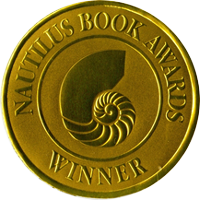Continuing Actions v.s. After Action
“What’s the difference between Continuing Actions and After Action?”
This is the response I’ve gotten from several people after I told them about my upcoming second book. In fact, I’ve heard that question enough times that I decided to write this post to explain the difference.
To begin with, let me list their similarities: Both books are non-fiction, both about combat and its after effects, both include my personal experiences in Iraq and afterward, and both were written to fill gaps in our modern understanding of what it means to be a warrior. They both contain information I wish someone had told me before, during, and after my service in the Marine Corps.
But that’s where the similarities end.
After Action, my first book, is very narrowly focused on my combat tours. I wrote it to bring the reader into the cockpit of an AH-1W SuperCobra gunship, and into my head as I flew it, during the 2003 invasion of Iraq. Building upon those experiences, the book goes on to explain how my reactions to combat followed me home and how I eventually came to view them with pride instead of shame. After Action contains detailed depictions of multiple combat engagements that my division mates and I engaged in during the first few weeks of the invasion that highlight the fatigue, confusion, exhilaration, and fear that were my constant companions in the cockpit.
Continuing Actions, however, is not about combat. At least, not about engaging in combat. Rather, it is about what happens afterwards–and what we, as veterans, can do to help ourselves fully come home. Almost as soon as I’d finished my first book, I knew I had more to say on the subject. I researched deeper into the experiences of warriors throughout history and came to the conclusion that there are a lot of things that we, as modern warriors, do not understand about the inevitable challenges of being a warrior. We’re really good at preparing to go into war, and great at actually fighting wars, but we suck at coming home.
Drawing on the works of mental health professionals, scholars, spiritual leaders, and other veterans, Continuing Actions explains how warriors throughout history have always had to face challenges after coming home. Many of these warriors came from what we might consider “primitive” cultures, but those cultures had a much deeper understand of a warrior’s challenges–and how to overcome them–than ours does.
Continuing Actions is not going to fix that.
What I hope it can fix is how we, as warriors, view the challenges of coming home. There is much talk of “stigma” these days, that having difficulty adjusting to life after combat is some sort of weakness that should be hidden. We tell ourselves these difficulties are shameful, indicative of some character flaw that we should be strong enough to just stuff away and ignore out of existence. Instead of learning from our experiences, most of us lock them away in our minds where they turn toxic and leak poisons into our daily lives.
It’s not society that is encouraging us to do this. It’s us. We, veterans and active duty alike, incubate the stigma of weakness in our own minds and then transmit it to others through our actions. We’re the ones doing it. We’re the only ones who can change it.
We spent years “leading from the front” while on active duty–we were the first to tackle any challenge, to face the hardest task, toughest school or most dangerous mission. No leader worth a shit, regardless of rank, would ever tell his or her subordinates to do something they weren’t willing to do themselves. The realities of combat sometimes makes this impractical as a hard and fast rule–orders have to be given and followed–but as a foundational ethos, leading from the front is something we have all aspired to.
So why don’t we lead from the front when it comes to the challenges of coming home?
Because we’ve forgotten that these challenges are integral to, and not failures of, our warrior identity. Instead of calling them out and tackling them head on, we wrongly assume we’re the only one facing them. By keeping quiet and hoping the challenges of adjusting to life after combat will just go away, we encourage the perception that these reactions are aberrations that affect only the weak–because they only become visible when they’re overwhelming. But hiding these challenges doesn’t make them go away. It makes them more difficult to deal with.
This must change before meaningful improvements can be made in how current and future veterans come home from war. And this change can’t happen just at the Veterans Administration. It has to also take place at the individual veteran’s level. We have to lead from the front and face these challenges ourselves, first. Then we can help others do the same.
Our nation stands to gain tremendous benefits from her returning veterans. Generations of veterans before us have provided much needed injections of wisdom and maturity into our society. Now it’s our turn.
Before we can gain access to the wisdom and maturity our nation needs, though, we have some work to do. Continuing Actions explains this work as part of our duty as veterans, identifies the tools we can use to accomplish it, and defines a pathway through the challenges of coming home.
#Update: Continuing Actions: A Warrior’s Guide to Coming Home has won a Gold Nautilus Award in the 2015 Nautilus Book Awards, “Personal Growth” category, and a Bronze Medal in the 2016 Independent Publisher Book Awards, “Psychology” category. (scroll down to category #66).
It is available on Amazon.com.
#MentalHealthAwarenessWeek, #NautilusBookAwards, #IPPY, #LiteraryAwards, #VeteranAuthor, #PTSD, #AmWriting, #Transition, #MentalHealth, #Military


